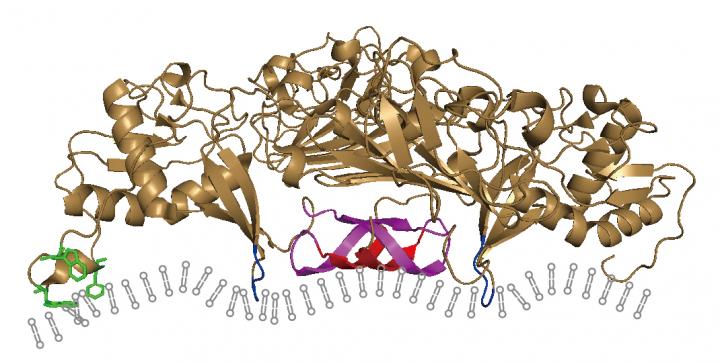
Credit: Ci et al., 2019
Researchers in China have discovered how a Zika virus protein reshapes its host cell to aid viral replication. The study, which will be published December 23 in the Journal of Cell Biology, reveals that the viral protein NS1 converts an interior cellular compartment called the endoplasmic reticulum (ER) into a protective region where the virus can survive and replicate. Blocking this process could be a novel therapeutic strategy to treat patients infected with Zika or similar viral pathogens, such as the yellow fever and dengue viruses.
The Zika virus causes relatively mild symptoms in most cases but can result in severe birth defects when pregnant women are infected. Once the virus enters a host cell, it reshapes the cell’s ER, causing this membrane-bound compartment to fold inward and form small pockets where the virus can replicate its genetic material, without being attacked by the host cell’s immune defenses.
“The architecture of this viral replication compartment is well known, but how the Zika virus remodels the ER is obscure,” says Lei Shi, a researcher at the Institute of Basic Medical Sciences, Chinese Academy of Medical Sciences and School of Basic Medicine, at Peking Union Medical College in Beijing.
In the new study, Shi and colleagues find that this remodeling process is carried out by a viral protein called NS1 that accumulates in the ER of infected cells. The researchers discovered that NS1 inserts itself into the ER membrane, causing it to fold inward and form viral replication compartments. When the researchers mutated NS1 to prevent it from inserting into the ER membrane, the protein was unable to remodel the ER and viral replication was inhibited.
“We conclude that NS1-induced ER remodeling is the basis of replication compartment biogenesis and that viral replication and production are abolished in the absence of this process,” says Shi, who co-led the study with Wei Yang, from the Institute of Pathogen Biology in Beijing, and Cheng-Feng Qin, from the Beijing Institute of Microbiology and Epidemiology.
The Zika virus is closely related to a number of other viruses, including the yellow fever virus, dengue virus, and West Nile virus, that also convert the ER of their host cells into specialized viral replication compartments. Shi and colleagues found that the dengue virus’s NS1 protein also induces ER remodeling, suggesting that all of these pathogenic viruses use similar mechanisms to generate their replication compartments and that blocking this process could be a new therapeutic strategy to treat Zika and other viral infections.
###
Ci et al., 2019. J. Cell Biol. https:/
About the Journal of Cell Biology
The Journal of Cell Biology (JCB) features peer-reviewed research on all aspects of cellular structure and function. All editorial decisions are made by research-active scientists in conjunction with in-house scientific editors. JCB makes all of its content free online no later than six months after publication. Established in 1955, JCB is published by the Rockefeller University Press. For more information, visit www.rupress.org/jcb.
Visit our www.rupress.org/pages/newsroom, and sign up for a weekly preview of articles to be published. Embargoed media alerts are for journalists only.
Follow JCB on Twitter at @JCellBiol and @RockUPress.
Media Contact
Ben Short
[email protected]
212-327-7053
Related Journal Article
http://dx.




